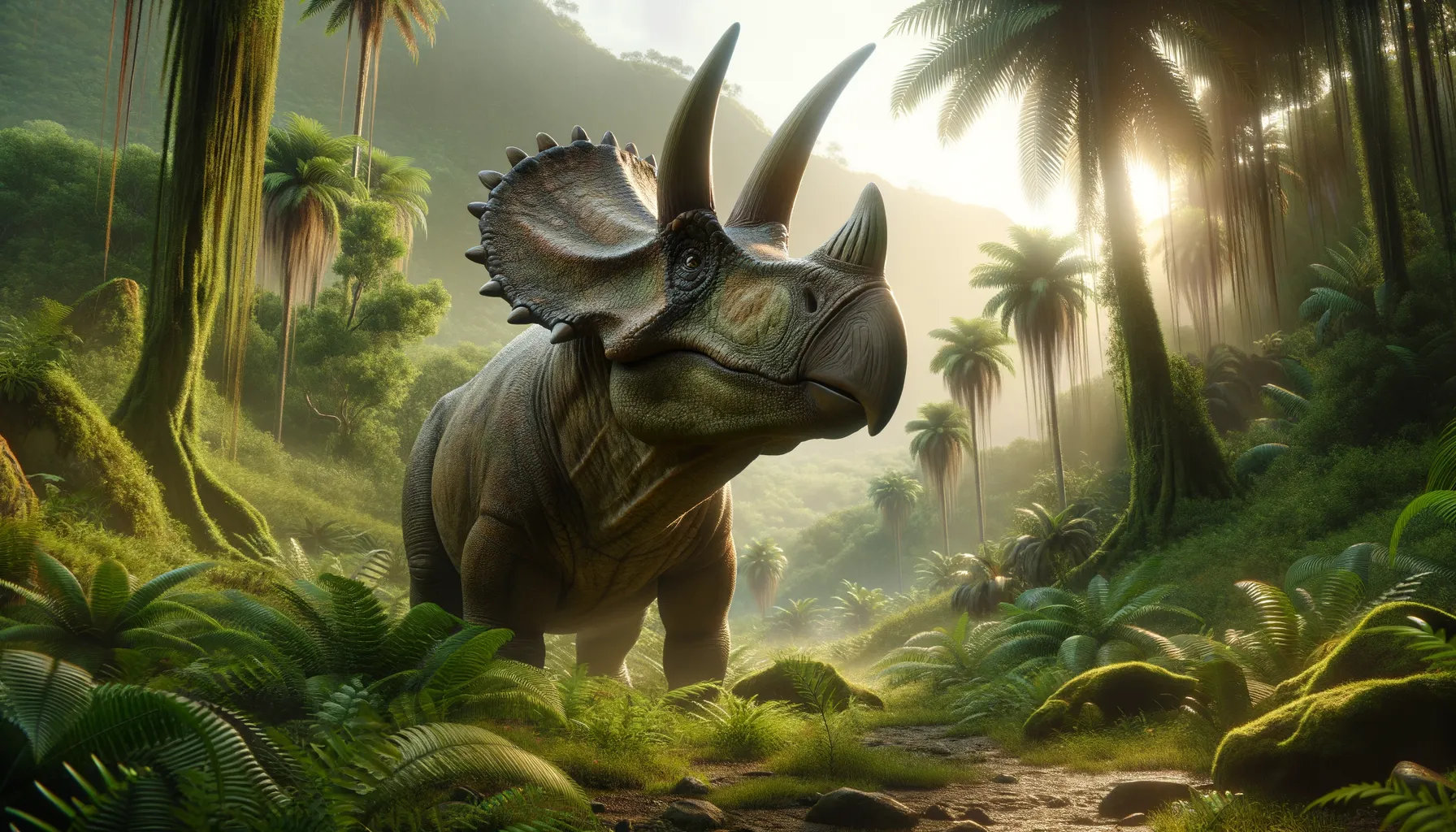
Nasutoceratops
A horned giant with a unique nose!
Period
Cretaceous
Length
Reached lengths of up to 15 feet.
Height
Stood about 6 feet tall at the hips.
Weight
Weighed around 2.5 tons.
Nasutoceratops was a ceratopsid dinosaur known for its large, rounded nose and distinctive brow horns. It lived in what is now North America during the Late Cretaceous period. Its unique features set it apart from other horned dinosaurs of its time, and it likely used its horns for display and defense. This herbivore thrived in the lush, subtropical environments of its era.
Diet
Nasutoceratops was herbivorous, feeding primarily on the lush vegetation of its environment. Its beak-like mouth was well-adapted for clipping and ingesting tough plant material.
Hunting
As a herbivore, Nasutoceratops would not have hunted but instead browsed for plant material. Its foraging likely involved seeking out soft plants and low-lying shrubs in its environment.
Environmental challenges
Nasutoceratops faced challenges such as competition for food with other herbivores. It lived in a time of fluctuating climatic conditions, which influenced the availability of resources. Adaptability to different plant types might have been crucial for its survival. Predators were also a threat, requiring constant vigilance and likely group vigilance for safety.
Speed
Relatively slow, suited for short bursts.
Lifespan
Estimated to have lived for 20 to 25 years.
First discovery
First discovered in Utah, USA in 2006.
Fun Facts
- Nasutoceratops was a dinosaur with a huge nose and large horns, similar to a rhinoceros.
- It lived about 76 million years ago during the Late Cretaceous period.
- The name 'Nasutoceratops' means 'large-nosed horned face.'
- Nasutoceratops was a plant-eater, munching on the lush vegetation of its time.
- Its horns were used for defense against predators and also in social interactions with other Nasutoceratops.
- This dinosaur was roughly the size of a modern elephant, making it a striking figure in its prehistoric landscape.
- Nasutoceratops fossils were first discovered in Utah, USA, in 2006.
Growth and Development
Growth in Nasutoceratops involved reaching significant size to deter predators. Its distinctive horns and frill developed more prominently as it matured. Juveniles likely stayed with the herd for protection as they developed these defensive features.
Habitat
Nasutoceratops inhabited subtropical forests and floodplains in North America. It thrived in environments rich in vegetation, which supported its herbivorous diet. The landscape would have included rivers and lush plant life, offering ample shelter and food sources.
Interaction with other species
Nasutoceratops coexisted with a variety of other dinosaur species. Its herbivorous nature meant it competed with other plant-eaters for food. Interaction with predators like tyrannosaurs required group strategies for defense, leveraging its horns as a deterrent.
Natural lifespan
Nasutoceratops had a natural lifespan of about 20 to 25 years.
Reproduction
Nasutoceratops likely engaged in seasonal breeding, similar to modern reptiles. Nesting sites would have been chosen carefully, possibly in secluded areas to protect from predators. Hatchlings may have stayed near adults for protection and learning herbivorous foraging skills.
Social behaviour
Nasutoceratops may have lived in herds for protection against predators. Social behaviors included displays with its horns and frills for mating or dominance. Group living allowed for cooperative defense and increased vigilance in predator-rich environments.
Fossil locations
Fossils of Nasutoceratops have been primarily discovered in Grand Staircase-Escalante National Monument in Utah, USA. This location has provided important insights into the diversity of Late Cretaceous dinosaurs in the region. The well-preserved specimens have allowed for detailed studies of its anatomy and evolutionary relationships within ceratopsids.
